Carrying Local Wisdom into the Modern Era
When we talk about cultural wisdom, many people tend to see it as something outdated—something meant to be preserved behind museum glass. The very mention of the word often evokes a sense of the past. Yet from another perspective, local wisdom is in fact a priceless heritage — a raw material that can be transformed and extended into something that lives alongside the present day. This can be seen in how traditional knowledge continues to inspire new creations in food, beverages, and craftsmanship.
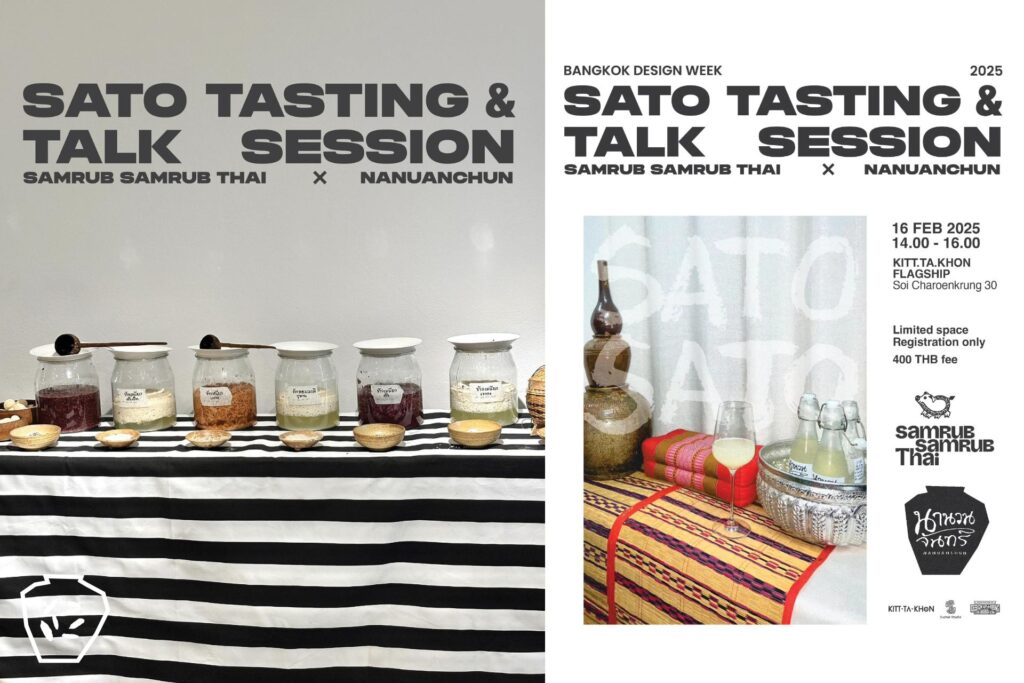
Sharing Local Wisdom at Bangkok Design Week 2025
This past February, during Bangkok Design Week 2025, Nanuanchun had the opportunity to host a talk on local wisdom in collaboration with Samrub Samrub Thai, generously supported by Studio Kit Ta Khon, located in Charoenkrung Soi 30.
It was my first time speaking publicly about the Nanuanchun project—from developing sato (traditional Thai rice wine) using native rice varieties, to adapting traditional knowledge into contemporary forms. I was truly delighted to be among people who share a passion for local crafts and culture.
During the event, we held a sato tasting workshop, featuring fresh brews made from more than six types of native rice, served straight from the jar into traditional khan bowls designed by Suchai Craft. The tasting was paired with sticky rice and jin thup (Sun-dried beef)—simple yet delicious dishes prepared by Chef Prin and Mint Thanyaporn from Samrub Samrub Thai.
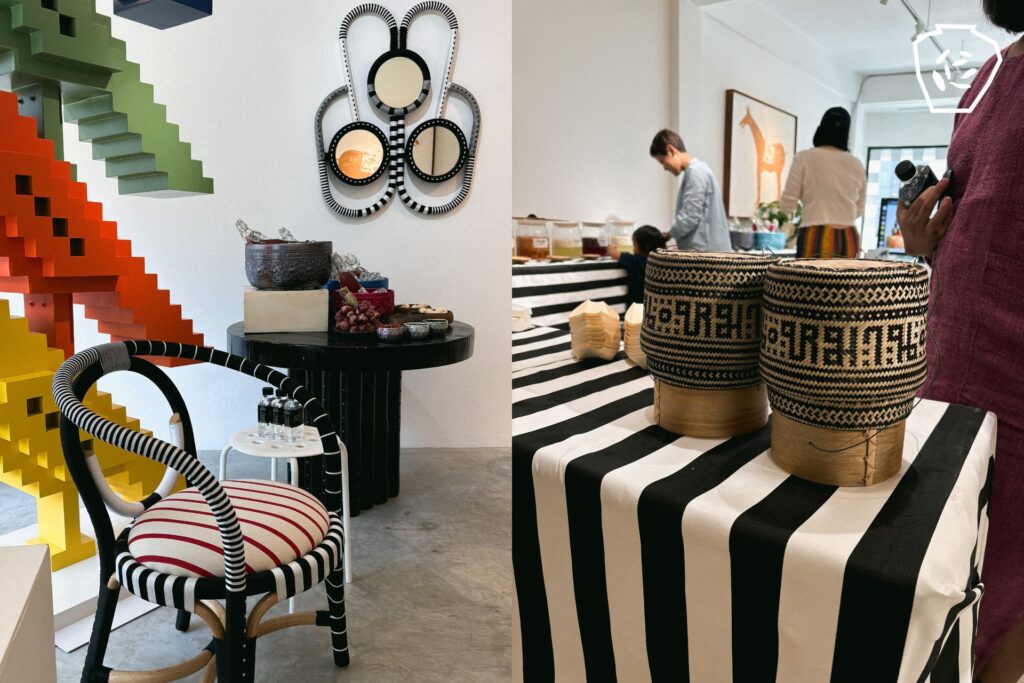
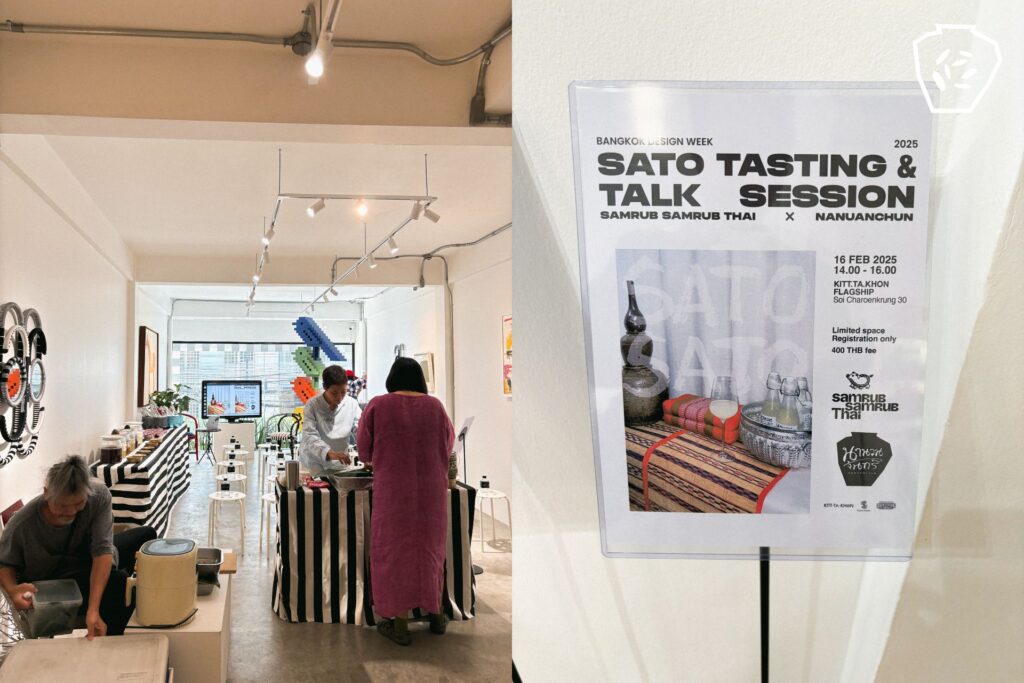
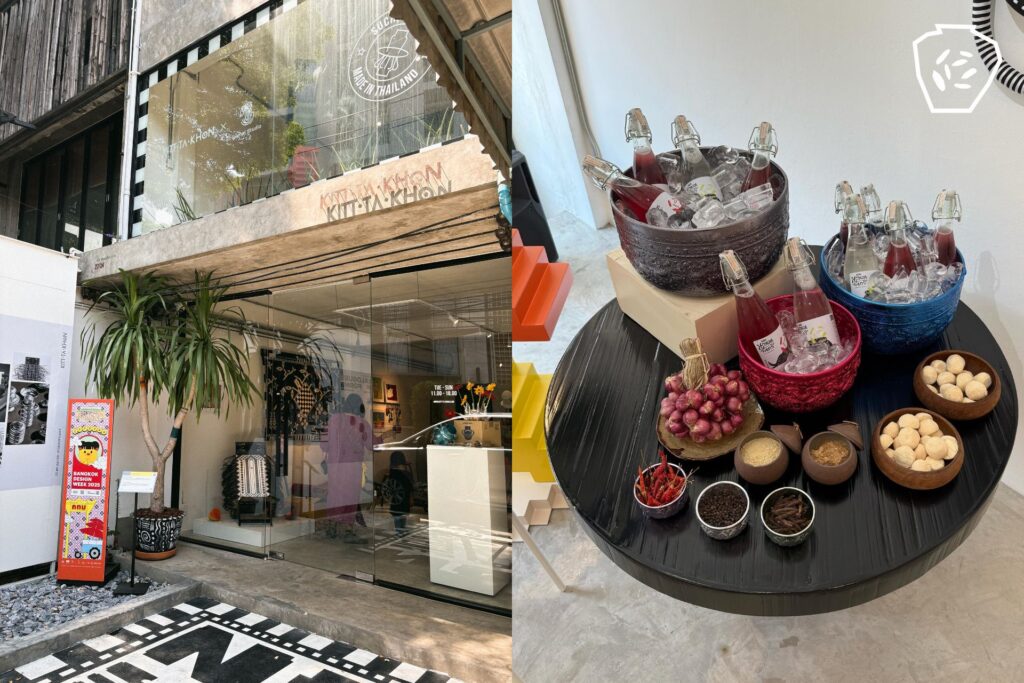

Returning Home to Reconnect with My Roots
During the discussion session on developing local wisdom for contemporary living, I shared the story of how this journey began—before I ever started making sato. I used to work as an architect and designer. After years in the city, I began to look back at my home and realized how far I had drifted from it. The longer I worked in urban spaces, the greater the distance became. Yet deep inside, I longed for my rural hometown—the food my mother cooked, and the rice fields where I used to play. That yearning eventually led me back home.
My home is in Somdet District, Kalasin Province—a quiet rural area that still holds the atmosphere of countryside life. Most people of my generation have left to find opportunities in Bangkok, leaving behind mostly children and the elderly.
When I returned, I began redesigning my parents’ land—the inheritance passed down from Grandfather Nuan and Grandmother Chan, my only true capital. I started exploring the neighborhood, seeking new possibilities and local materials that could be developed further. From there, I created a brand for my home, naming it after my grandparents, who founded and cultivated this land. That’s how Na-Nuan-Chan (Nanuan Jan)—meaning “the rice fields of Grandpa Nuan and Grandma Chan”—was born.

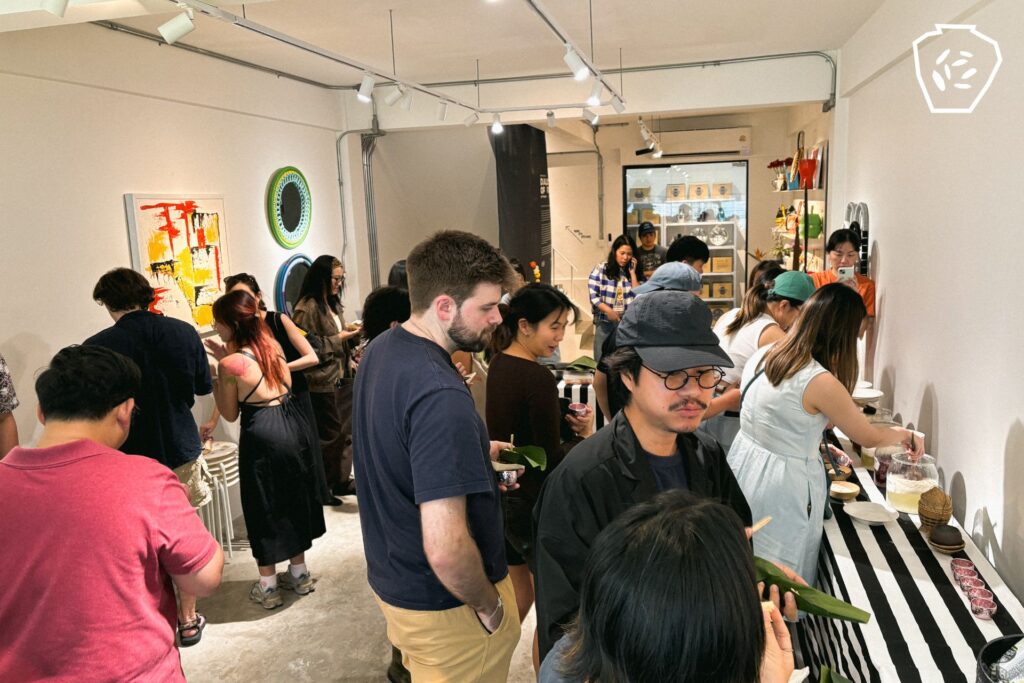
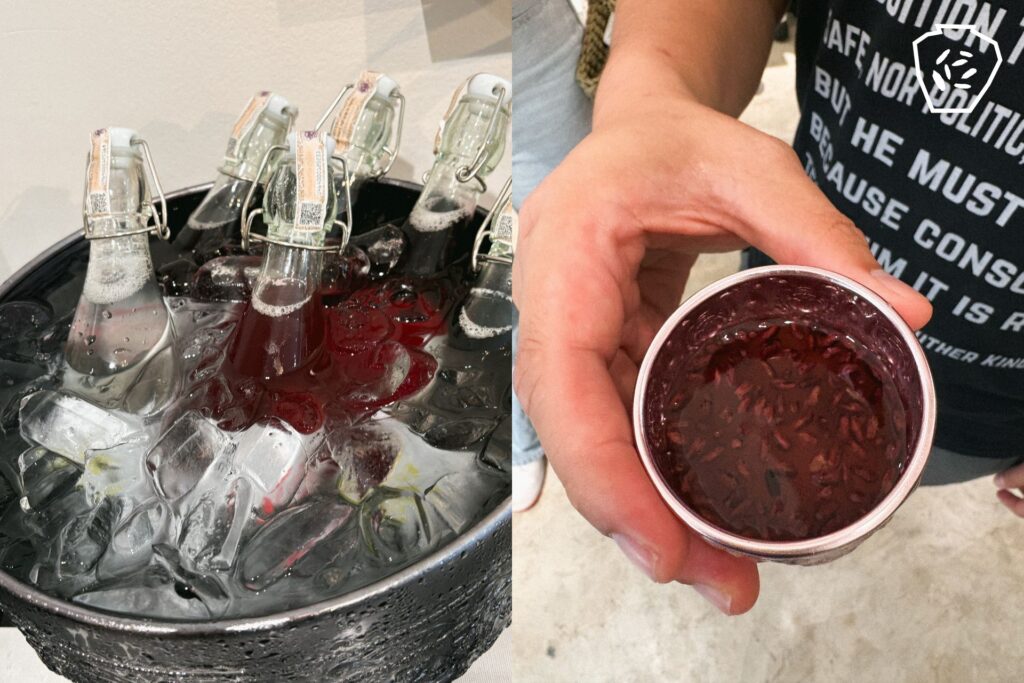
From Daily Experiments to a Handcrafted Sato
As I began building the brand, I started sharing my journey on social media—documenting the daily changes and small experiments along the way. I tried making many different things using ingredients I could find around me, until one day I decided to make sato from the rice my family grows. That experiment became a turning point.
Through that first batch, I came to know Samrub Samrub Thai, and Mint Thanyaporn Jarukittikun was one of the first people who asked to buy my sato. Since then, I’ve continued refining and improving its flavor to meet a higher standard—enough to be served in fine dining restaurants—while still receiving ongoing support from Samrub Samrub Thai.
We share the same belief: that local wisdom can be reimagined and carried forward into the present, evolving into something even better. I see myself as just one person who returned home to create something meaningful from the knowledge of my ancestors—something that brings color and vitality back to rural life.
But none of this would be possible without support. I believe there are many others like me who dream of returning home. Our generation still has so much energy and creativity, and if more young people had the chance to bring that energy back to their hometowns, imagine how much life could return to these rural places once again.
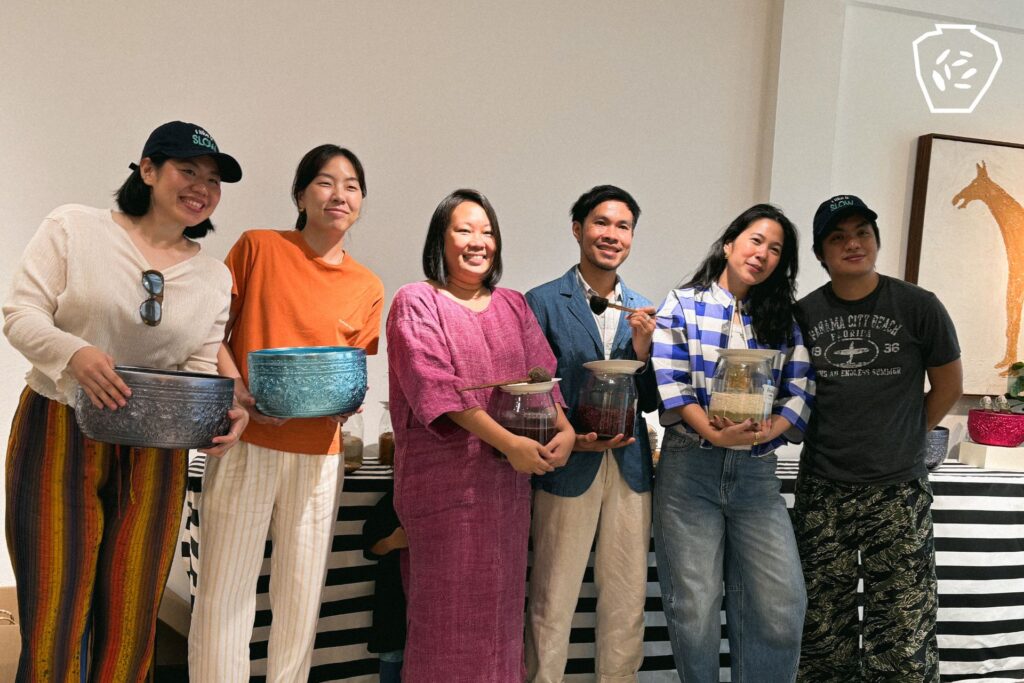
From Preservation to Living Wisdom
Local wisdom—or any form of native resource—no matter how valuable it is, will eventually fade away if it is never put to use.
The conclusion of our conversation today was not about preserving local wisdom, but rather about how to bring it to life—how to apply it in ways that serve the present moment. The real challenge lies in developing what we already have, so that traditional knowledge can evolve into a new form of contemporary local wisdom that continues to live and grow with time.

 ไทย
ไทย
